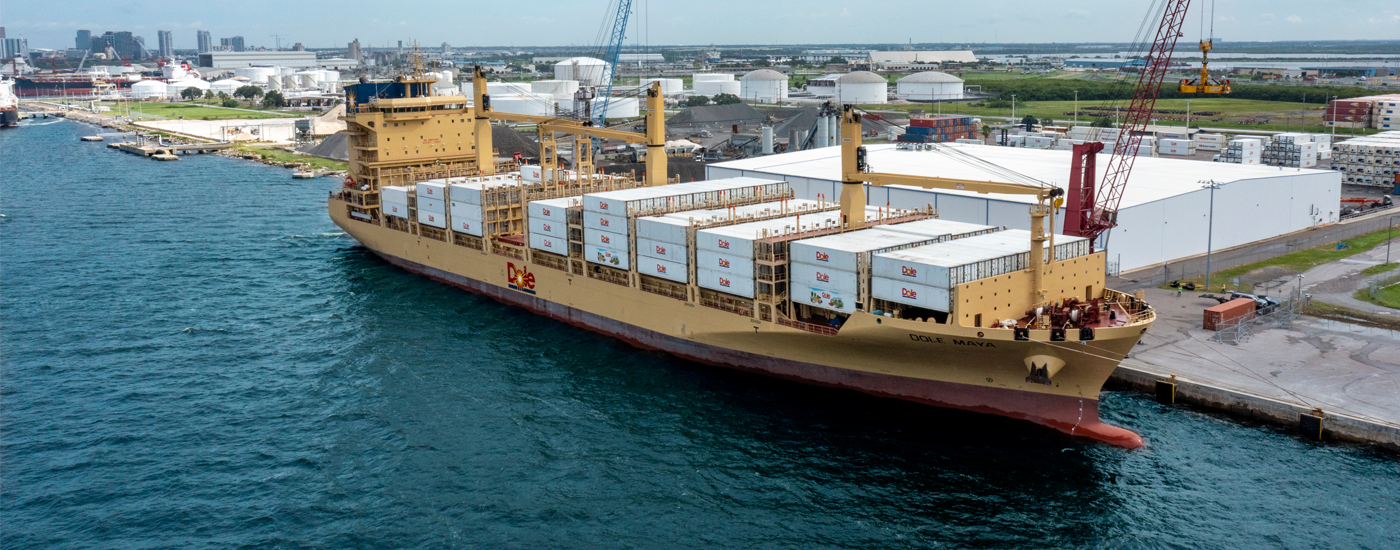Port Tampa Bay is Florida’s largest and most diversified seaport and the largest economic engine in West Central Florida. Located on the Interstate-4 Corridor, in one of the fastest growing regions in the country, Port Tampa Bay supports varied maritime and related activities, including shipbuilding and repair facilities; cruise; and the largest cargo tonnage volume in the state.
Building on a rich history as a leading bulk port, Tampa today accommodates a broad mix of bulk, break-bulk, roll-on/roll-off, and container cargo. Port Tampa Bay is becoming a notable, cost-effective supply chain alternative and solution for shippers and carriers alike. The Tampa Bay/I-4 Corridor region is home to almost half of Florida’s population and the largest concentration of distribution centers in the state, approaching 400 million square feet of capacity.
Port Tampa Bay’s container volume has increased nearly 30% over the past year, and the port has accommodated this growth thanks to a terminal build-out program, working closely with terminal operator partner Ports America. Most of the top global container lines now offer weekly service from Asia to Port Tampa Bay. The recent addition of new weekly container service from Central America by Dole and expanded connections with Mexico by ZIM and Linea Peninsular, have added diversity and options. The Port recently completed 25 acres of additional paved storage bringing the total container terminal footprint to 67 acres, with plans to add another 30 acres. Work has also begun on the addition of a third berth which will bring the total to over 4,500 linear feet allowing three large ships to be worked at the same time.
Expansion plans will include a new container gate complex and additional gantry cranes, which will bring the annual terminal capacity to 1 million TEUs—more than enough capacity to satisfy the future container shipping needs of the rapidly growing Central Florida market.
Since Port Tampa Bay is the closest port to Florida’s hub for the grocery and food and beverage sector, another key facility is the new Port Logistics Refrigerated Services 135,000 SF cold storage facility powered by Titan Cold Storage.
Port Tampa Bay is the energy products gateway to West and Central Florida, importing the oil and gas needs for a huge regional market, as well as the jet fuel needs for the international airports in Tampa and Orlando. The port’s main petroleum products terminal complex recently underwent massive expansion and modernization.
Port Tampa Bay is also Central Florida’s primary gateway for construction and building materials, including break bulk commodities such as steel and forest products, as well dry bulk cargoes such as cement, limestone, granite and gypsum.
Goals & Objectives
- Continued diversification of lines of business, with a particular focus on attracting manufacturing for exports, perishables, construction and building materials
Current or Planned Investments
- Container Berth and Yard Expansion, including additional cranes
- New Bulk Berth 218
- Ongoing Build Out of Port Redwing
Accomplishments
- Secured new direct container services from Asia, Central America and Mexico
- Completed the expansion and deepening of the Big Bend channel, which connects to the main channel in Tampa’s harbor and will allow larger vessels to dock along the channel and facilitate the movement of goods through the Port to the Interstate 4 corridor
- As a result of the Port’s ongoing strategy to continue to diversify its lines of business, the Port has seen continued cargo growth across most commodities and strong financial performance, despite the challenges of the pandemic
Hinterland
Bulk/Break-bulk: Central Florida for energy, building, citrus and fertilizer products.
Container: Florida, and through CSX, the U.S. Midwest and entire eastern seaboard.
Trade Partners

Mission
The [Tampa Port Authority] TPA will be recognized as a leader in the maritime industry. The TPA will have a customer-driven, strategic business focus in working with stakeholders to develop and manage marine terminals and supporting infrastructure for the benefit of the regional economy. The TPA will employ sound financial, business, and environmental management practices in fulfilling its mission.

